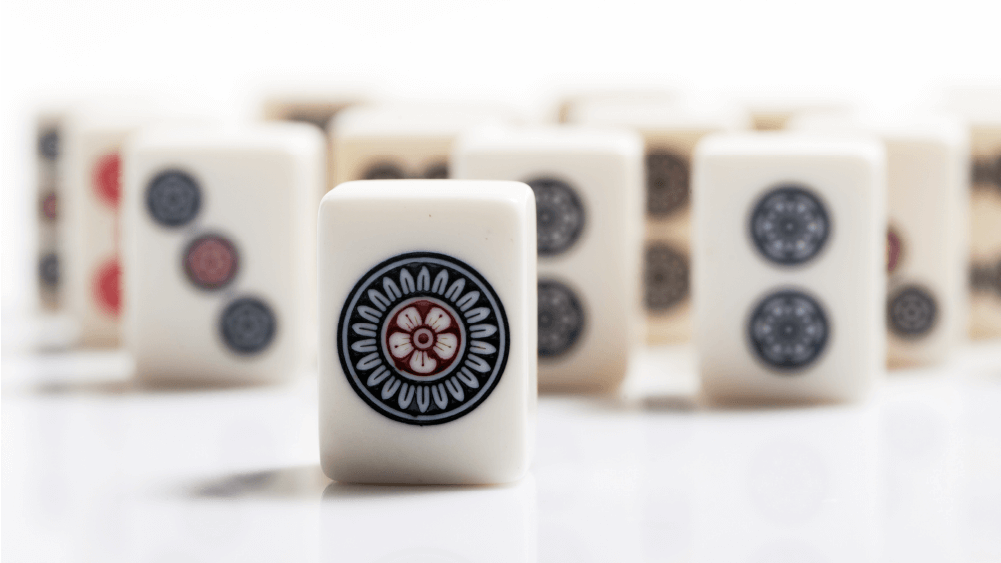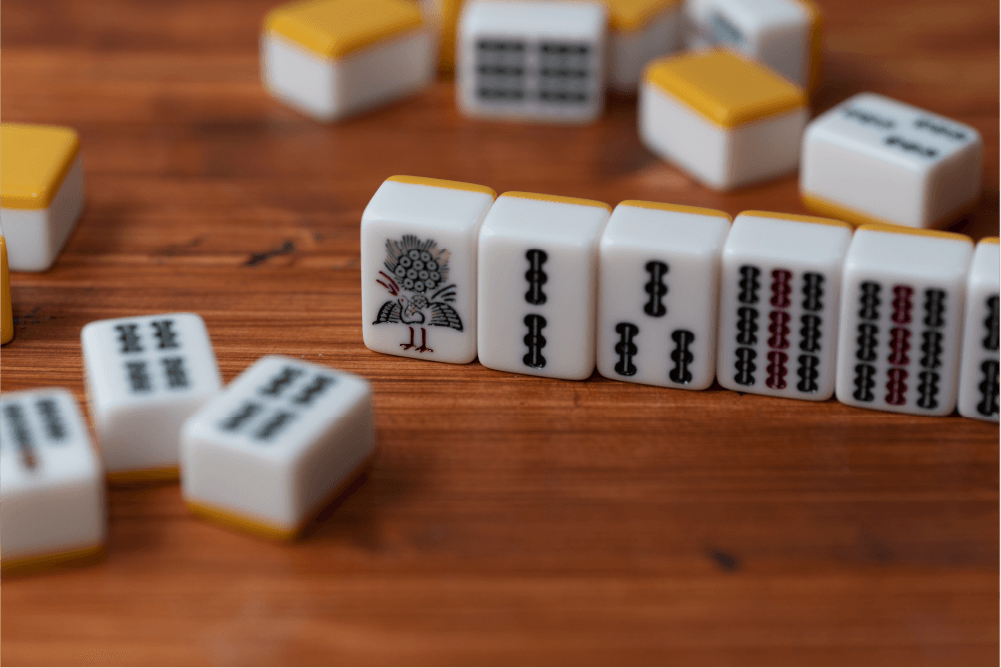If you’re new to mahjong or looking to expand your knowledge, understanding the vocabulary is a great place to start. From terms that describe tile sets to those used for winning moves, learning this language will help you communicate better at the table and boost your gameplay. Here’s a guide to essential mahjong terms every player should know.
1. Tile Suits
- Bamboo (Bams): Tiles with bamboo sticks, numbered one through nine.
- Dots (Dotties): Circular symbols representing numbers, often called “dotties.”
- Characters (Craks): Chinese characters also numbered one through nine; these are sometimes called “craks” in English.
2. Honor Tiles
- Winds: Four directional tiles—East, South, West, and North. Each player is assigned a wind seat at the start of the game.
- Dragons: Three types of dragon tiles—Red, Green, and White—that add complexity to hands and are useful in creating high-scoring sets.
3. Sets
- Pung: A set of three identical tiles. A pung can be “exposed” or “concealed,” depending on whether it’s revealed during gameplay.
- Chow: A sequence of three tiles from the same suit (e.g., 4-5-6 of Bamboo). Chows can only be made with numbered tiles.
- Kong: Four identical tiles. A kong scores more than a pung and can be particularly valuable in certain hands.
- Pair: Two identical tiles. Every mahjong hand includes one pair as part of its winning structure.

4. Gameplay Terms
- Draw: Picking a tile from the wall, which is the set of tiles from which players draw throughout the game.
- Discard: Placing a tile face-up on the table, making it available for opponents to claim or pass.
- Mahjong: The term players shout when they complete a winning hand. Declaring “Mahjong” is how a player wins the round.
- Wall: The stacked tiles on the table, from which players draw. The wall is broken after an initial roll of dice.
5. Scoring Terms
- Dora (Japanese): A bonus tile in Japanese mahjong that can increase the score if it appears in a winning hand.
- Fan: Used in scoring calculations, each fan level increases the final score. Different hands yield different fan counts.
- Yaku (Japanese): Specific conditions in Japanese mahjong required to win. Meeting these conditions gives points and contributes to achieving “Riichi” (see below).

6. Special Terms
- Riichi: A unique feature in Japanese mahjong, Riichi is a call players make when they’re one tile away from winning. This move locks their hand and adds suspense.
- Self-draw (Zimo): Winning by drawing the tile you need from the wall, which often yields extra points.
- Furiten (Japanese): A rule in Japanese mahjong where you cannot win by another player’s discard if you’ve previously passed a winning tile yourself.
Familiarizing yourself with these terms can elevate your understanding of the game and prepare you for a more advanced level of play. With these in mind, you’re ready to jump into a game or even test your skills at a World Mahjong Tour tournament!


